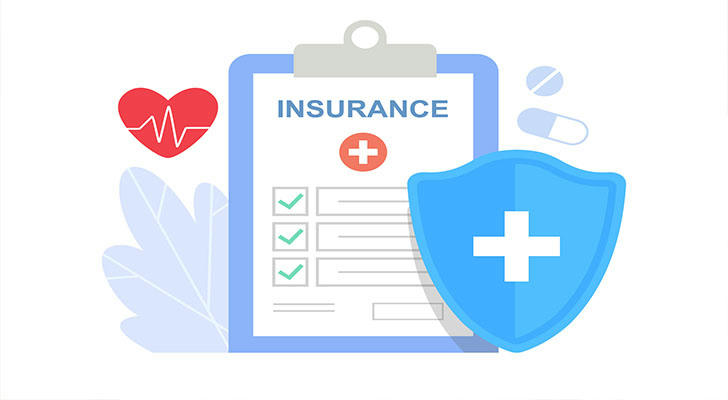Detailed Explanation of Medical Insurance Coverage: Which Items Can Be Reimbursed?
Medical insurance, as an essential part of the modern social security system, plays a key role in reducing individual medical expenses and ensuring basic healthcare needs. Understanding the scope of medical insurance coverage and knowing which medical items can be reimbursed is crucial for making the best use of insurance resources and lowering medical costs. This article provides a detailed explanation of the coverage scope of medical insurance, helping readers clearly grasp the specific reimbursable items and their benefits.

1. Basic Coverage of Medical Insurance
Medical insurance covers a wide range of services, mainly including the following aspects:
1. Basic Medical Services
Basic medical services are the core of medical insurance, including routine doctor consultations, emergency services, outpatient treatments, and mental health services. These services meet the daily medical needs of insured individuals and protect their basic health rights.
2. Inpatient Treatment
Inpatient treatment costs are a primary focus of medical insurance coverage, including hospital bed fees, nursing fees, surgery fees, anesthesia fees, examination fees, and other necessary medical expenses during hospitalization. Since inpatient treatment is usually costly, insurance reimbursement significantly reduces the financial burden on patients.
3. Preventive Services
Preventive medical services include vaccinations, routine physical examinations, and health screenings. Most medical insurance plans waive copayments for these services to encourage early prevention and disease detection, thereby reducing the incidence of major illnesses in the future.
4. Prescription Drug Costs
Medical insurance reimburses prescription drug costs within the insurance drug list. Insured individuals purchasing drugs covered by the insurance list can receive partial reimbursement. The drug list is uniformly formulated and dynamically adjusted by the government to ensure essential clinical drugs are covered.
5. Behavioral Health Services
Behavioral health services include mental health treatments and addiction therapies. An increasing number of insurance plans include these services in their reimbursement scope to promote mental health protection.

2. The “Three Lists” Management System of Medical Insurance
Medical insurance adopts a management system based on three key lists: the drug list, medical consumables list, and medical service items list. These lists specify which medical expenses are eligible for reimbursement:
Medical Insurance Drug List: Covers commonly used Western medicines, proprietary Chinese medicines, and traditional Chinese medicine pieces to ensure safe and effective medication for patients.
Medical Consumables List: Includes surgical instruments, implants, and other consumables to regulate insurance payments and prevent excessive medical treatment.
Medical Service Items List: Specifies diagnostic procedures, laboratory tests, surgical treatments, and other services to standardize the use of insurance funds.
Through this list-based management, insurance funds can precisely cover reasonable medical needs and avoid resource waste.
3. Medical Expenses Not Covered by Insurance
It is equally important to understand which medical expenses are not reimbursable. Common non-reimbursable cases include:
Medical expenses incurred at non-designated medical institutions: Except for emergency treatment, medical costs at non-designated hospitals are generally not reimbursed.
Expenses for drugs and services outside the insurance lists: Drugs and medical services not included in the insurance lists are not reimbursable.
Costs related to sports fitness, health care, and health check-ups: These are considered non-disease treatments and are not covered by insurance funds.
Work-related injuries, third-party liabilities, and public health expenses: Work injury medical costs are covered by work injury insurance; third-party liability medical costs are borne by the responsible party; public health services such as vaccinations are funded by government finance.
Overseas medical expenses: Medical costs incurred abroad are generally not reimbursed.
4. Advantages and Benefits of Medical Insurance Reimbursement
The broad coverage of medical insurance brings many advantages:
1. Reduces Individual Medical Burden
Insurance reimbursement significantly lowers out-of-pocket expenses for inpatient and outpatient care, alleviating the risk of poverty due to illness and ensuring basic medical needs are met.
2. Promotes Rational Medical Consumption
Through list management and designated medical institution systems, insurance encourages patients to choose standardized medical services, avoiding overtreatment and unnecessary expenses.
3. Supports Prevention and Health Management
Insurance coverage of preventive services encourages early disease detection and intervention, reducing the incidence of major diseases and improving overall health levels.
4. Enhances Accessibility of Medical Services
Insurance covers urban and rural residents as well as employees, safeguarding the medical rights of different groups and promoting equitable distribution of medical resources.
5. Regulates the Medical Market
The rational use of insurance funds promotes standardized service behavior by medical institutions, improving medical quality and efficiency.
5. How to Maximize the Use of Medical Insurance Reimbursement?
To fully leverage the protection of medical insurance, insured individuals should pay attention to the following:
Choose designated medical institutions for treatment to ensure medical expenses meet reimbursement conditions.
Prioritize drugs and consumables within the insurance lists to avoid unreimbursed costs caused by using non-listed items.
Stay informed about policy changes and list adjustments to keep up with the latest reimbursement scope.
Arrange medical treatment levels and methods reasonably, such as choosing community hospitals for minor illnesses and tertiary hospitals for serious conditions.
Complete cross-region medical treatment registration to conveniently enjoy insurance benefits across different areas.

6. Conclusion
Medical insurance coverage includes basic medical services, inpatient treatment, preventive services, prescription drugs, and behavioral health, with fund usage regulated through the “three lists” management system. Understanding which medical items are reimbursable helps insured individuals seek medical care scientifically and reduce medical expenses. Medical insurance not only alleviates personal financial pressure but also promotes rational allocation of medical resources and widespread health management, serving as a vital safeguard for public health. Proper utilization of medical insurance can build a solid health defense for everyone and achieve higher-quality medical protection.
